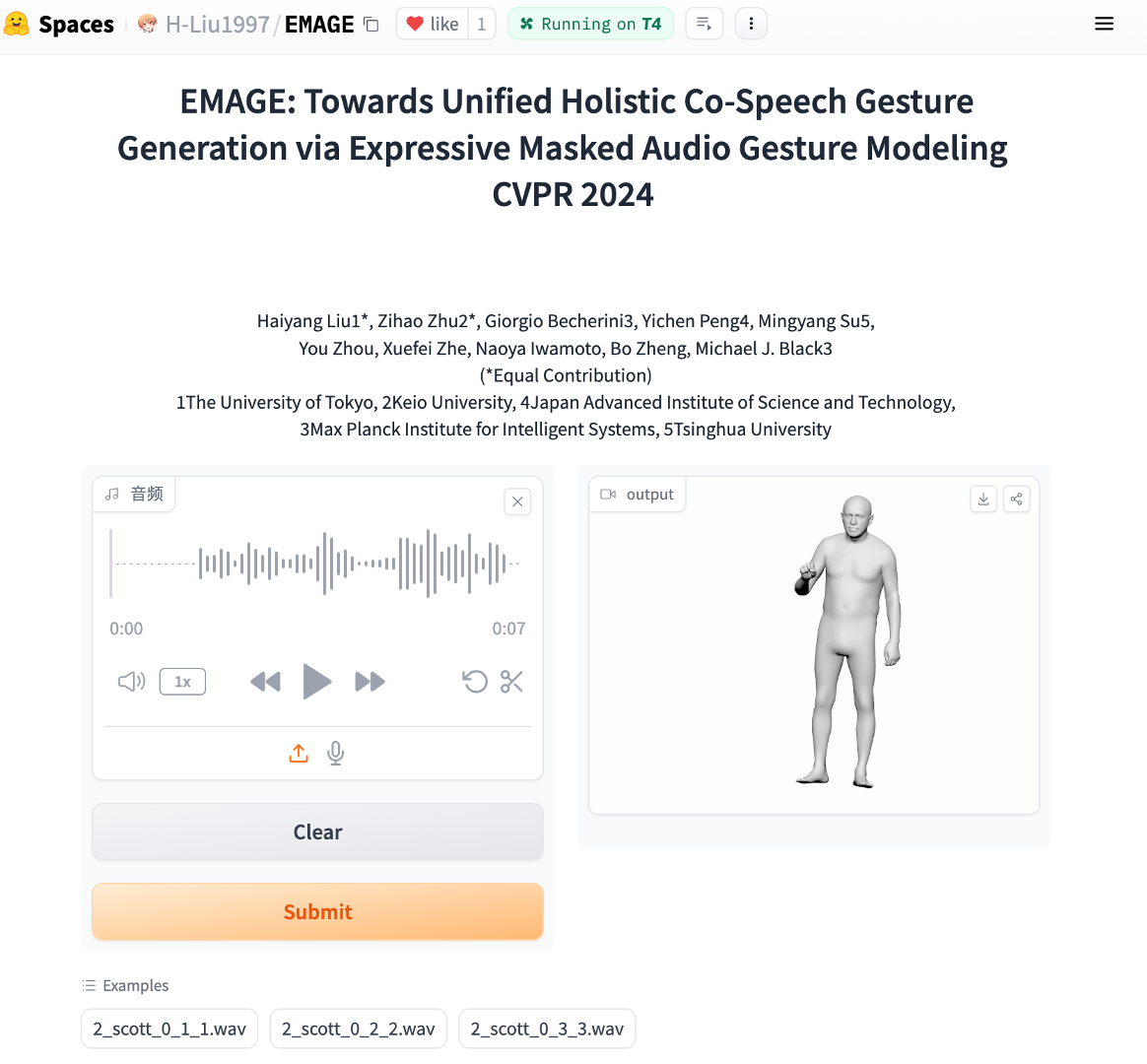BEAT: A Large-Scale Semantic and Emotional Multi-Modal Dataset for Conversational Gestures Synthesis
Achieving realistic, vivid, and human-like synthesized conversational gestures conditioned on multi-modal data is still an unsolved problem due to the lack of available datasets, models and standard evaluation metrics. To address this, we build Body-Expression-Audio-Text dataset, BEAT, which has i) 76 hours, high-quality, multi-modal data captured from 30 speakers talking with eight different emotions and in four different languages, ii) 32 millions frame-level emotion and semantic relevance annotations. Our statistical analysis on BEAT demonstrates the correlation of conversational gestures with facial expressions, emotions, and semantics, in addition to the known correlation with audio, text, and speaker identity. Based on this observation, we propose a baseline model, Cascaded Motion Network (CaMN), which consists of above six modalities modeled in a cascaded architecture for gesture synthesis. To evaluate the semantic relevancy, we introduce a metric, Semantic Relevance Gesture Recall (SRGR). Qualitative and quantitative experiments demonstrate metrics' validness, ground truth data quality, and baseline's state-of-the-art performance. To the best of our knowledge, BEAT is the largest motion capture dataset for investigating human gestures, which may contribute to a number of different research fields, including controllable gesture synthesis, cross-modality analysis, and emotional gesture recognition. The data, code and model are available on https://pantomatrix.github.io/BEAT/.
PDF Abstract




 BEAT
BEAT
 BEAT2
BEAT2
